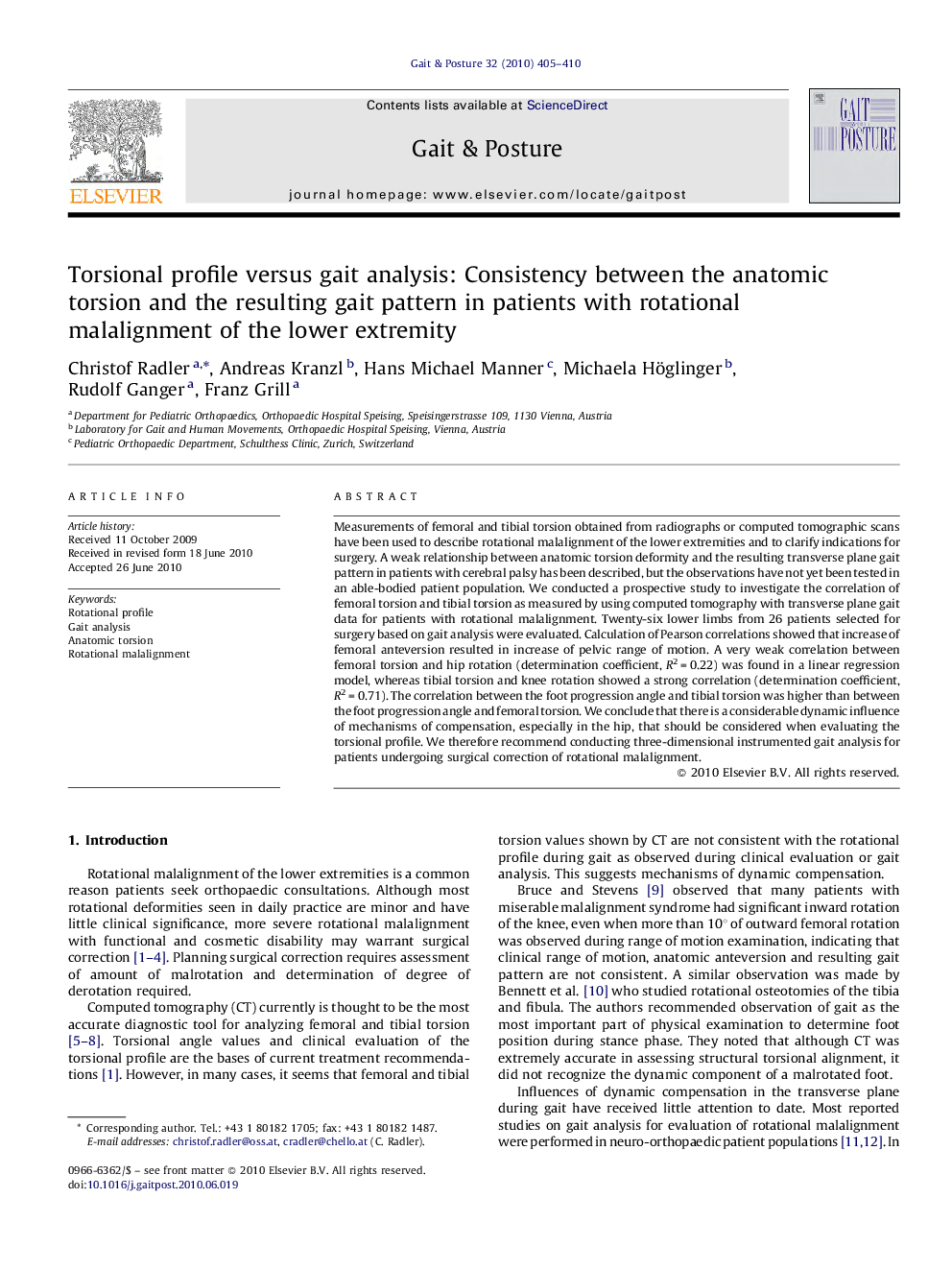| Article ID | Journal | Published Year | Pages | File Type |
|---|---|---|---|---|
| 4057179 | Gait & Posture | 2010 | 6 Pages |
Measurements of femoral and tibial torsion obtained from radiographs or computed tomographic scans have been used to describe rotational malalignment of the lower extremities and to clarify indications for surgery. A weak relationship between anatomic torsion deformity and the resulting transverse plane gait pattern in patients with cerebral palsy has been described, but the observations have not yet been tested in an able-bodied patient population. We conducted a prospective study to investigate the correlation of femoral torsion and tibial torsion as measured by using computed tomography with transverse plane gait data for patients with rotational malalignment. Twenty-six lower limbs from 26 patients selected for surgery based on gait analysis were evaluated. Calculation of Pearson correlations showed that increase of femoral anteversion resulted in increase of pelvic range of motion. A very weak correlation between femoral torsion and hip rotation (determination coefficient, R2 = 0.22) was found in a linear regression model, whereas tibial torsion and knee rotation showed a strong correlation (determination coefficient, R2 = 0.71). The correlation between the foot progression angle and tibial torsion was higher than between the foot progression angle and femoral torsion. We conclude that there is a considerable dynamic influence of mechanisms of compensation, especially in the hip, that should be considered when evaluating the torsional profile. We therefore recommend conducting three-dimensional instrumented gait analysis for patients undergoing surgical correction of rotational malalignment.
